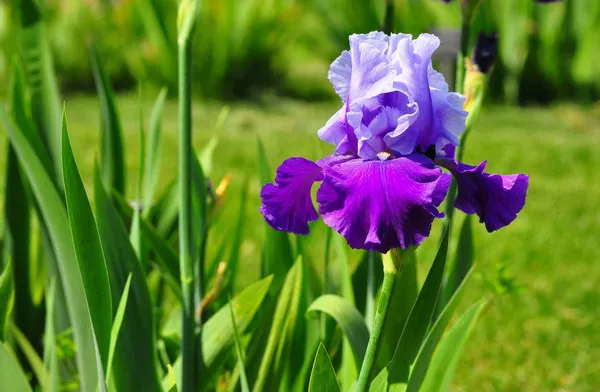Wisteria is a breathtakingly beautiful and popular climbing plant known for its cascading clusters of colorful blooms. For garden enthusiasts and horticulturists alike, propagating wisteria through cuttings is a rewarding way to reproduce the plant. However, patience is key when it comes to wisteria cuttings, as they require time and specific conditions to reach their full flowering potential. In this article, we will explore the process of propagating wisteria through cuttings and the factors that influence the time it takes for them to flower.
SEE ALSO: Exploration: The Enchanting Beauty of Wisteria Flowers
Propagating Wisteria Through Cuttings
1. Selecting Suitable Cuttings
The process of propagating wisteria through cuttings involves taking a section of the plant and encouraging it to root and grow independently. To begin, choose healthy, mature stems from the parent plant during the dormant season, which is typically late autumn or early winter. The selected stems should be around 12 to 18 inches long and preferably free from flowers or buds.
2. Preparing the Cuttings
Once the suitable cuttings have been selected, prepare them by making a clean cut just below a leaf node. Leaf nodes are the points on the stem where leaves emerge, and they contain the necessary growth hormones and cells that aid in rooting. Remove any leaves from the lower half of the cutting to prevent excessive moisture loss during the rooting process.
3. Rooting Hormone
Applying a rooting hormone to the base of the cutting can significantly improve the chances of successful root formation. Rooting hormones contain auxins, which are plant hormones that stimulate root growth. Dip the cut end of the wisteria cutting into the rooting hormone powder or gel before planting it in the rooting medium.
4. Rooting Medium and Environment
To encourage root development, plant the prepared wisteria cuttings in a well-draining rooting medium, such as a mixture of peat moss and perlite or vermiculite. Maintain a consistently moist environment around the cuttings without waterlogging to prevent rot. Covering the cuttings with a plastic dome or using a propagator can help retain humidity.
5. Time to Rooting
Wisteria cuttings usually take around 4 to 8 weeks to develop a healthy root system. However, this timeframe can vary depending on environmental conditions, cutting preparation, and the specific wisteria species being propagated.
Factors Affecting Flowering Time of Wisteria Cuttings
1. Wisteria Species and Cultivar
The time it takes for wisteria cuttings to flower can be influenced by the specific species and cultivar being propagated. Different wisteria species, such as Wisteria sinensis (Chinese wisteria) and Wisteria floribunda (Japanese wisteria), may have varying growth rates and flowering habits. Additionally, some cultivars may exhibit delayed or accelerated flowering compared to others.
2. Age of the Cutting
The age of the wisteria cutting at the time of propagation can impact its time to flower. Older and more mature cuttings tend to root and establish themselves faster than younger ones, which might require more time to develop a robust root system before initiating flowering.
3. Root Development
The health and vigor of the root system are critical factors in a wisteria cutting’s ability to flower. A well-established root system provides the plant with the necessary nutrients and support to allocate energy toward blooming. It is essential to avoid disturbing the roots during transplanting and to ensure the cutting has enough time to develop a healthy root system before initiating flowering.
4. Growing Conditions
The growing conditions provided to the wisteria cuttings significantly affect their overall health and flowering potential. Adequate sunlight, water, and nutrients are crucial for the cuttings to grow vigorously and eventually produce blooms. Wisterias are sun-loving plants, and providing them with a sunny location will enhance their chances of flowering.
5. Pruning and Training
Proper pruning and training of the young wisteria plant can influence its time to flower. By maintaining a balanced framework and encouraging lateral growth, you can create a robust structure that will be more likely to produce flowers. However, excessive pruning can delay flowering, as it might remove potential flowering buds.
Tips for Encouraging Flowering in Wisteria Cuttings
1. Patience and Care
While waiting for wisteria cuttings to flower, it is essential to be patient and provide consistent care. Continue to nurture the cuttings with proper watering and ensure they receive sufficient sunlight to support healthy growth.
2. Fertilization
Applying a balanced fertilizer, low in nitrogen but rich in phosphorus and potassium, can promote flowering in wisteria cuttings. Excessive nitrogen can stimulate vegetative growth at the expense of flowering.
3. Winter Chilling
Some wisteria species require a period of winter chilling to initiate flowering. If you live in a region with mild winters, consider providing the cuttings with a period of cold stratification by placing them in a refrigerator for a few weeks before planting.
Conclusion
Propagating wisteria through cuttings is an exciting and rewarding process, but it requires patience and attention to detail. The time it takes for wisteria cuttings to flower can vary depending on several factors, including the wisteria species, cutting age, root development, growing conditions, and pruning practices. By understanding and addressing these factors, gardeners can increase the likelihood of their wisteria cuttings blooming beautifully, adding splashes of color and fragrance to their outdoor spaces.


